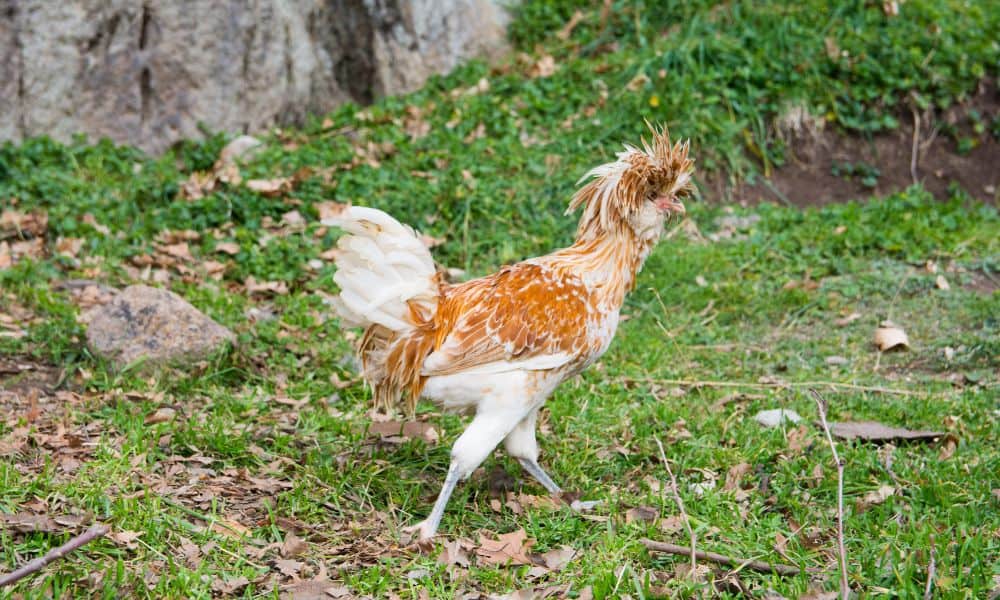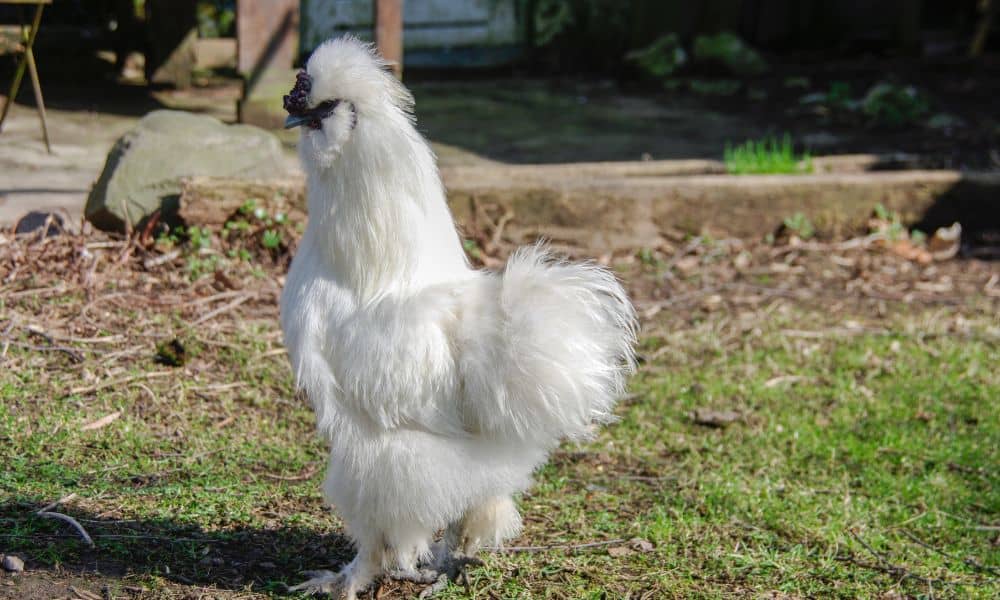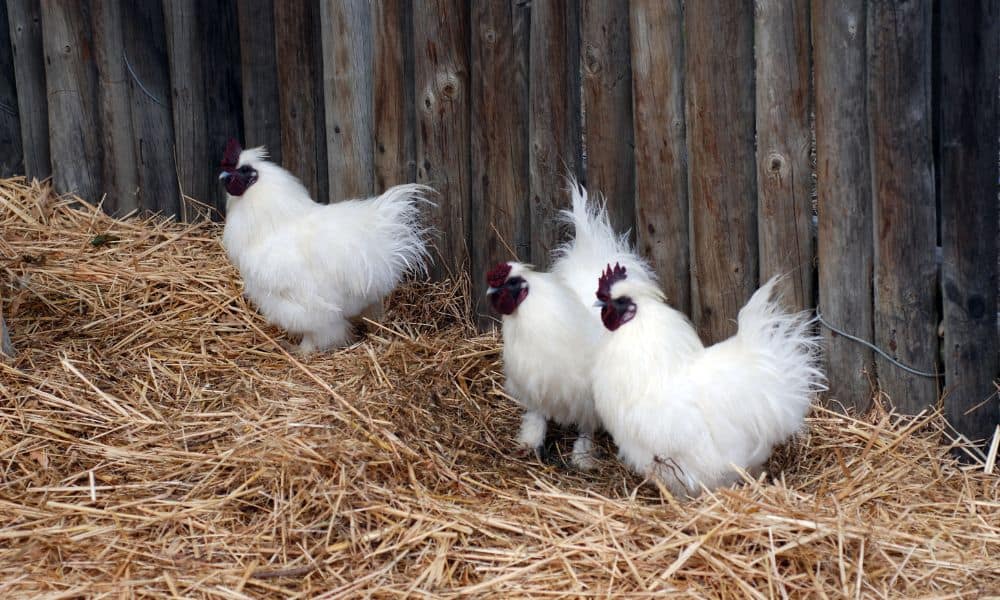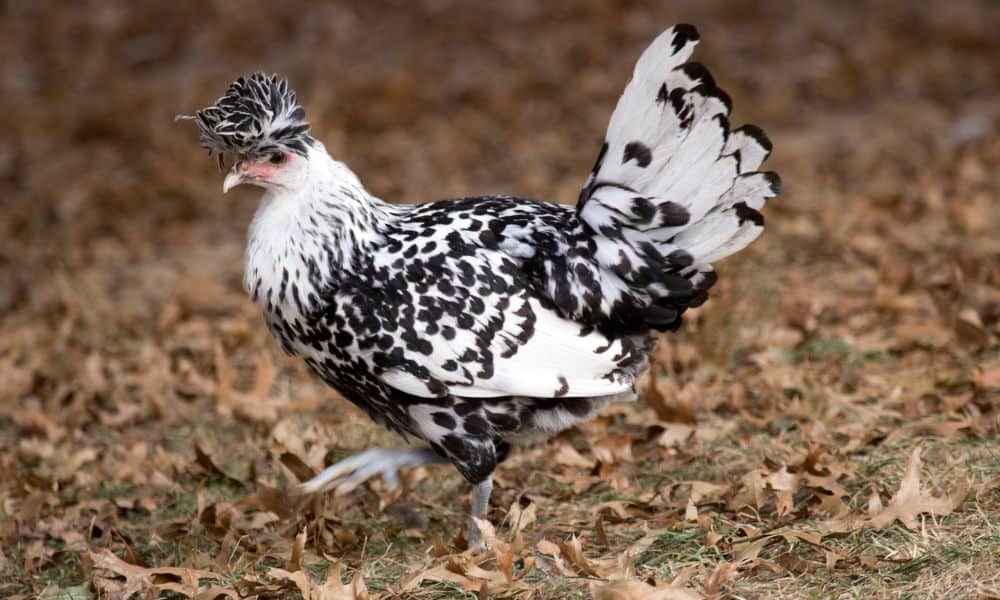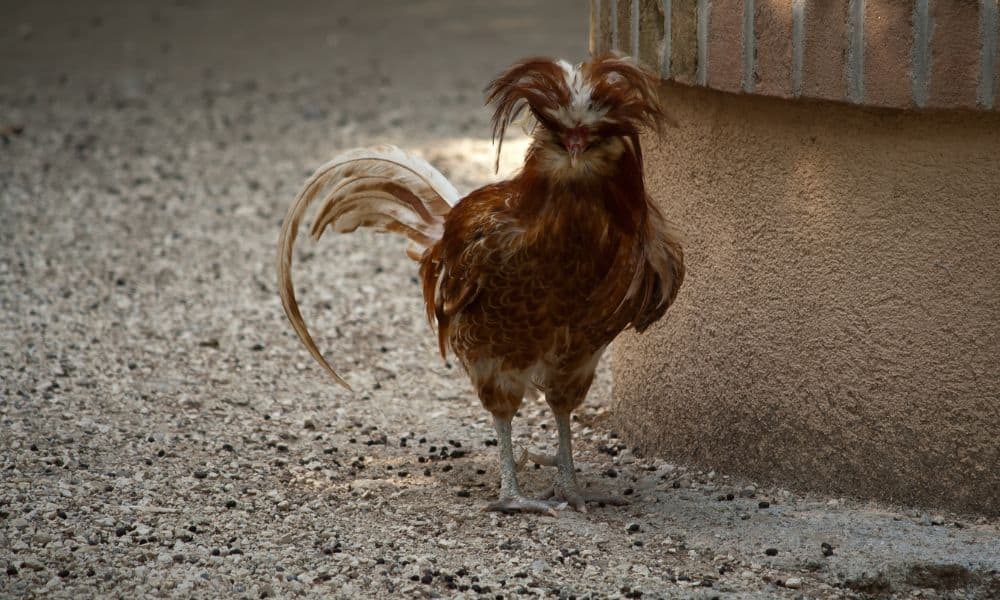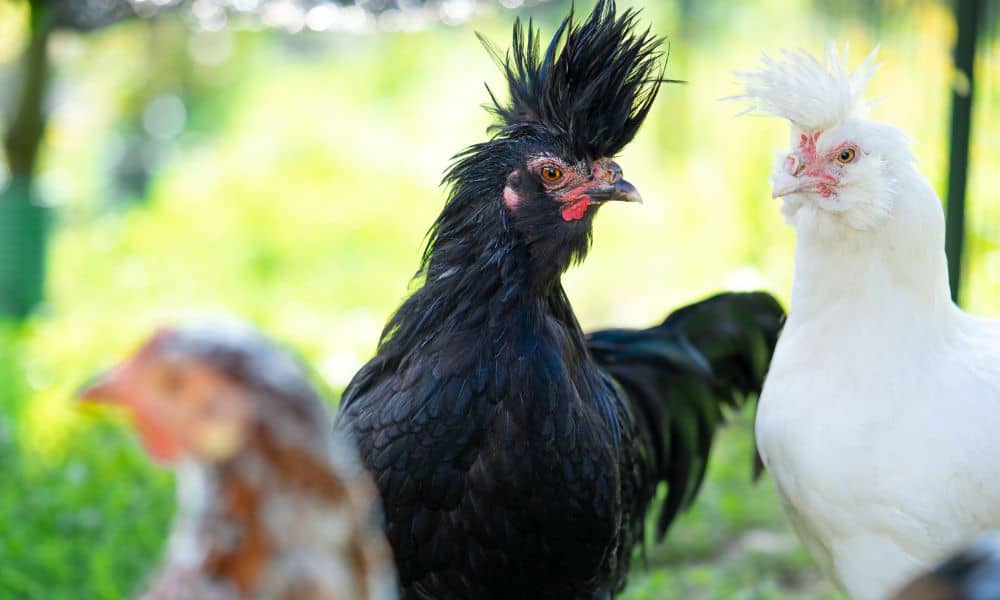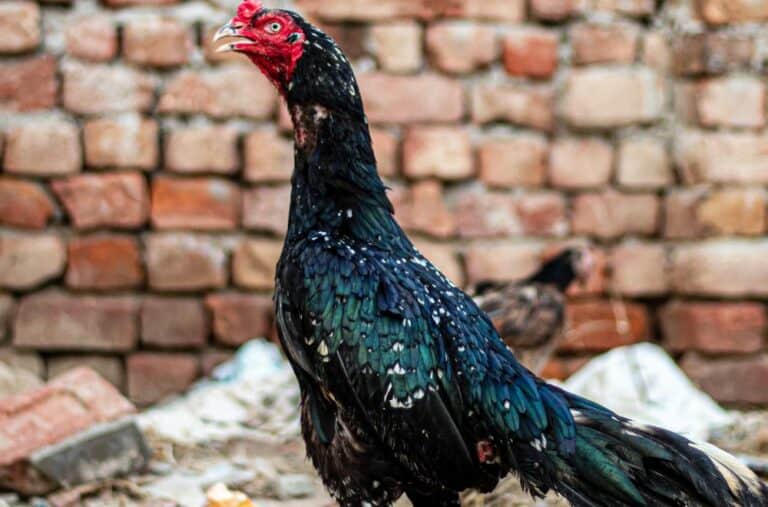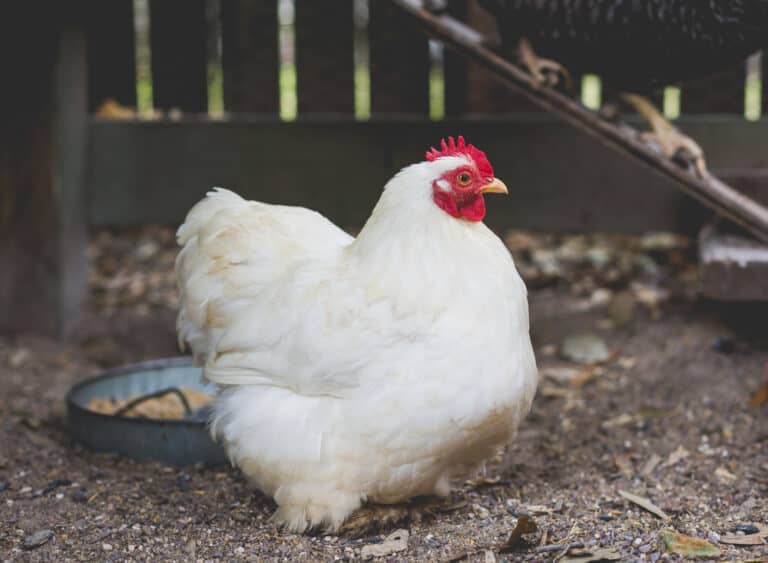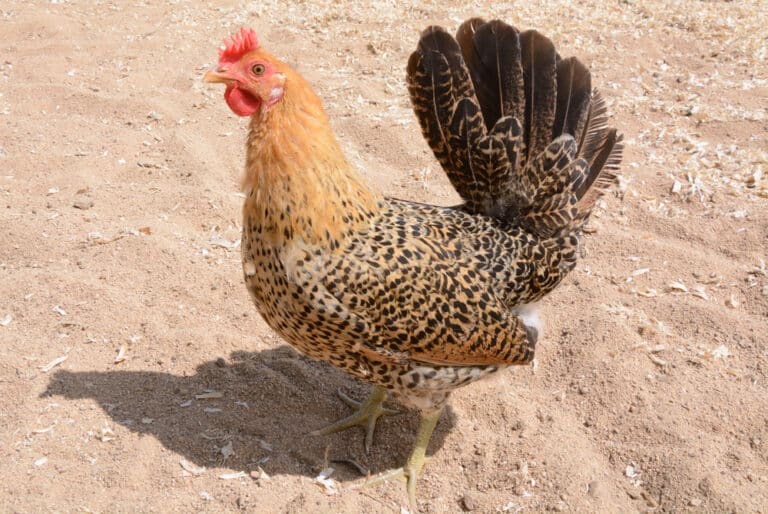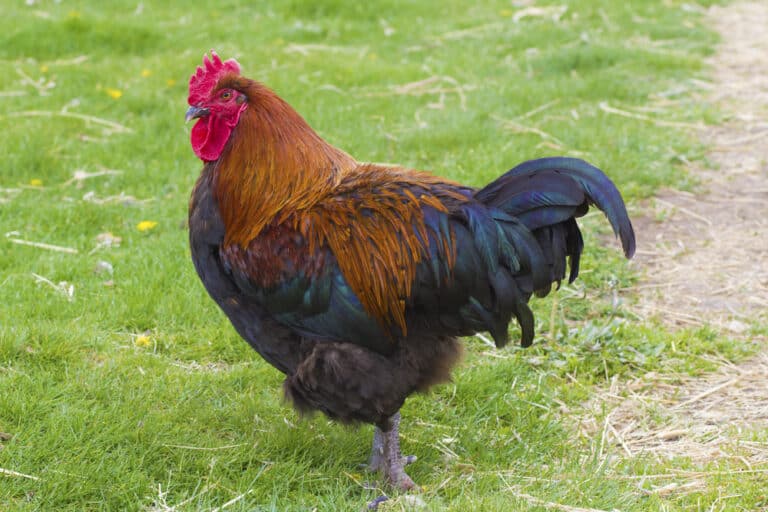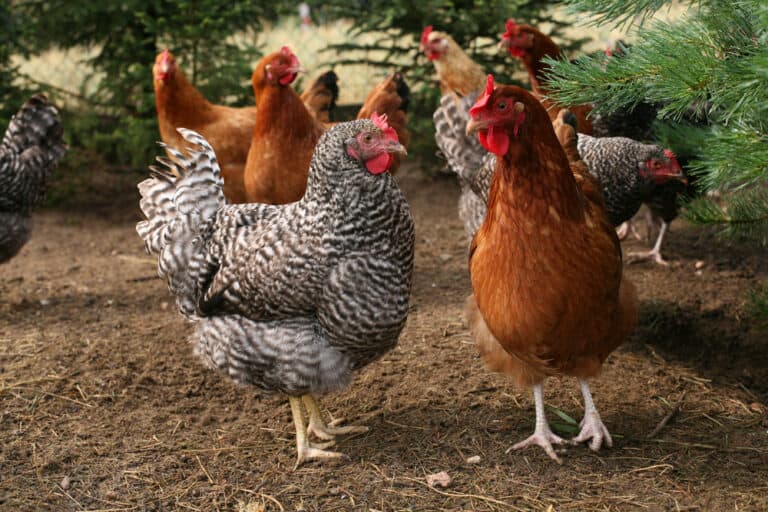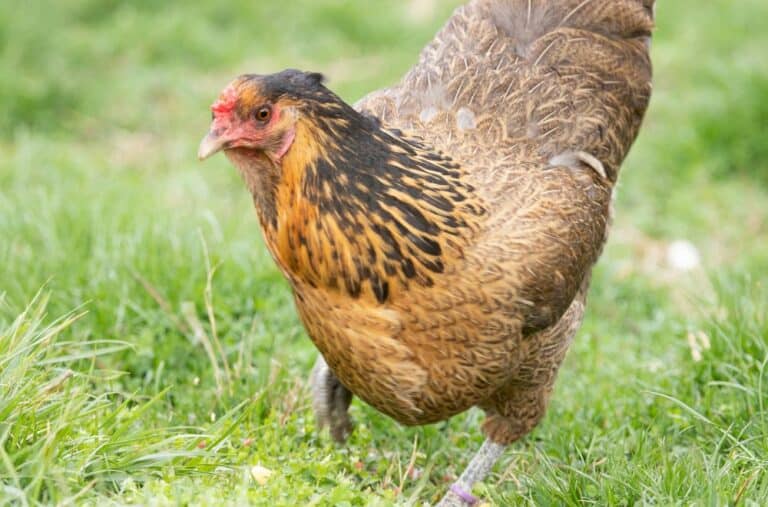If you’re looking for a chook to cut a dash in the farmyard, a crested chicken could be the perfect choice! These striking birds certainly stand out from the crowd. And there’s plenty of variety between the different breeds too.
We’re going to look at 12 beautiful crested chicken breeds to consider. We’ll investigate their heritage and characteristics. And we’ll find out more about their temperaments too.
So if you’re ready to learn more, read on!
Best Crested Chicken Breeds
1. Polish
The Polish has one of the most dramatic crests of any chicken breed. So large and flamboyant are they, in fact, that they need careful management. If they don’t stay clean, they can cause the birds eye infections or other problems.
Despite their name, there’s some debate about where Polish chickens actually come from.
Some believe that they hail from the Netherlands. “Pol” is the Dutch word for “head” – and Polish chickens have a large domed skull.
Others believe that the breed is descended from Asian chickens brought to central and eastern Europe by the Mongols. And they believe that it was first developed in Poland.
Whatever the truth of the matter, Polish chickens are striking birds. As well as their large crests, they have white earlobes, bright red wattles, and small, red, v-shaped combs.
Over the years, breeders have focused on their appearance at the expense of their egg-laying capabilities. And today, they’re most often kept as show birds to enter exhibitions.
They have a reputation for flightiness, but that’s largely because those large crests mean they can’t see very far. As a result, they can easily be taken by surprise. Singing or talking quietly to them as you approach will help them stay calm and happy.
2. Silkie
The Silkie is just what you’d expect from its name – a chicken with beautiful, silky plumage. There are two main types – bearded (those with a ruffle of feathers beneath their beaks) and unbearded. And there are both standard and bantam Silkies.
They are thought to have originated in Asia, probably in China. From there they spread out across the world, reaching US shores in the nineteenth century.
They can be found in a number of different color varieties. But they all have blue or black skin and bones. And their fluffy feathers have a different structure to that of most birds. That means that, despite being relatively small, Silkies can’t fly.
They have walnut-shaped combs, turquoise earlobes and dark wattles. And each foot has five toes – one more than most chickens have.
Their dramatic appearance means this is another breed most often used for showing. But Silkie hens are decent egg layers too. Their eggs may have tan, white or cream shells. And in a good year, you may get as many as 100 from each hen.
They often go broody (meaning they want to sit on and hatch their eggs). And when the chicks appear, they make excellent mothers. They’ll also happily incubate the eggs of other breeds.
3. Crèvecoeur
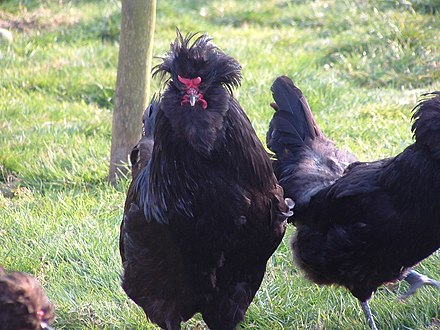
The Crèvecoeur originated in Normandy, in France. It takes its name from a commune there, Crèvecoeur-en-Auge. No-one knows when the breed was first developed, but the earliest records of its existence date from the nineteenth century.
Most Crèvecoeurs are black – and indeed, that’s the only color recognized by breeders in the USA and UK. In its native France, however, white, blue, and cuckoo chickens are also recognized.
The Crèvecoeur has an elegant crest, and four toes on each foot. Its wattles and earlobes are bright red, while its legs and feet are slate-blue or black. The comb is bright red too, and V-shaped.
In the past, this breed was used for both eggs and meat. These days, however, its dramatic looks mean that it’s used mainly for showing.
Sadly, numbers have declined over the years, and today, Crèvecoeurs are classed as an endangered breed.
4. Sultan
The Sultan chicken hails from Turkey. Its name reflects its illustrious origins as an ornamental bird in palace gardens. And they continue to be kept mainly for showing.
There are both standard and bantam varieties. Standard males weigh around 6 pounds, while females are around 4 pounds. Male bantams are about 26 ounces, while females are about 22 ounces.
They’re most commonly found with white plumage, but there are black and blue Sultans too. Their beautiful crests have a rounded, puffy look. And they also have beards, long tails, and feathering that extends to their feet.
That means they need plenty of care, especially in the winter months. Feathered feet need to be kept dry and warm, or they’re prone to frostbite.
They’re docile and friendly birds. And most will be quite happy with gentle handling, making them excellent pets.
5. Brabanter
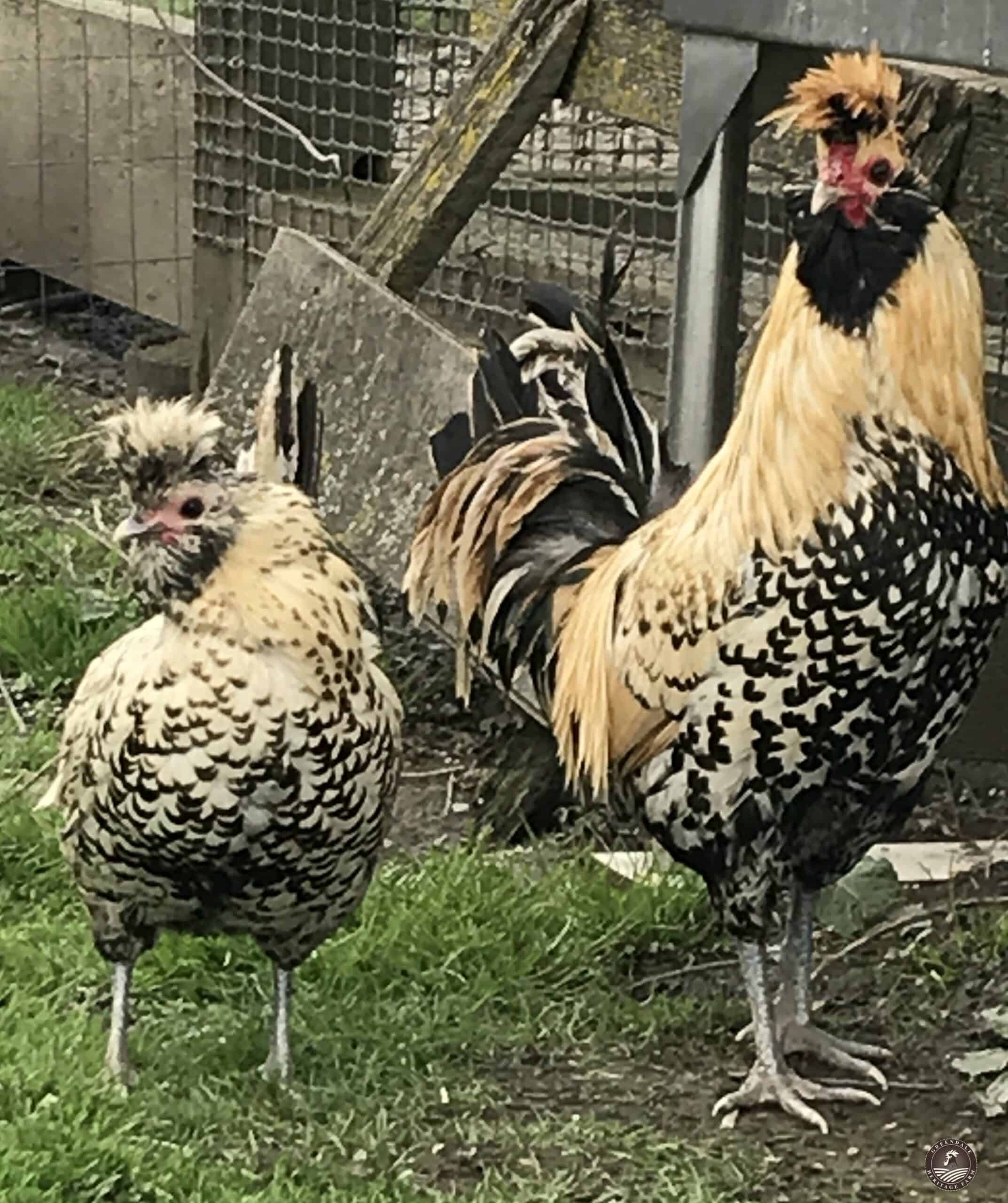
The Brabanter takes its name from the region of Brabant, which straddles the border between Belgium and the Netherlands. The breed has a long history, appearing in paintings from the seventeenth century.
In this chicken, the crest is narrow, and points slightly forwards and upwards. It’s accompanied by a three-part beard and a v-shaped comb. Many Brabanters don’t have wattles at all, although some are simply hidden by the beard. Their earlobes are small and white.
In the Netherlands, there are seven recognized varieties, including cuckoo, gold spangled, chamois and black. In Germany, 13 different colors are recognized.
These are calm and intelligent birds. The hens are decent egg layers and rarely go broody. And the small combs and wattles of both sexes mean that they’re better able to cope with colder temperatures than many other breeds. (They will, of course, still require good shelter.)
6. Houdan
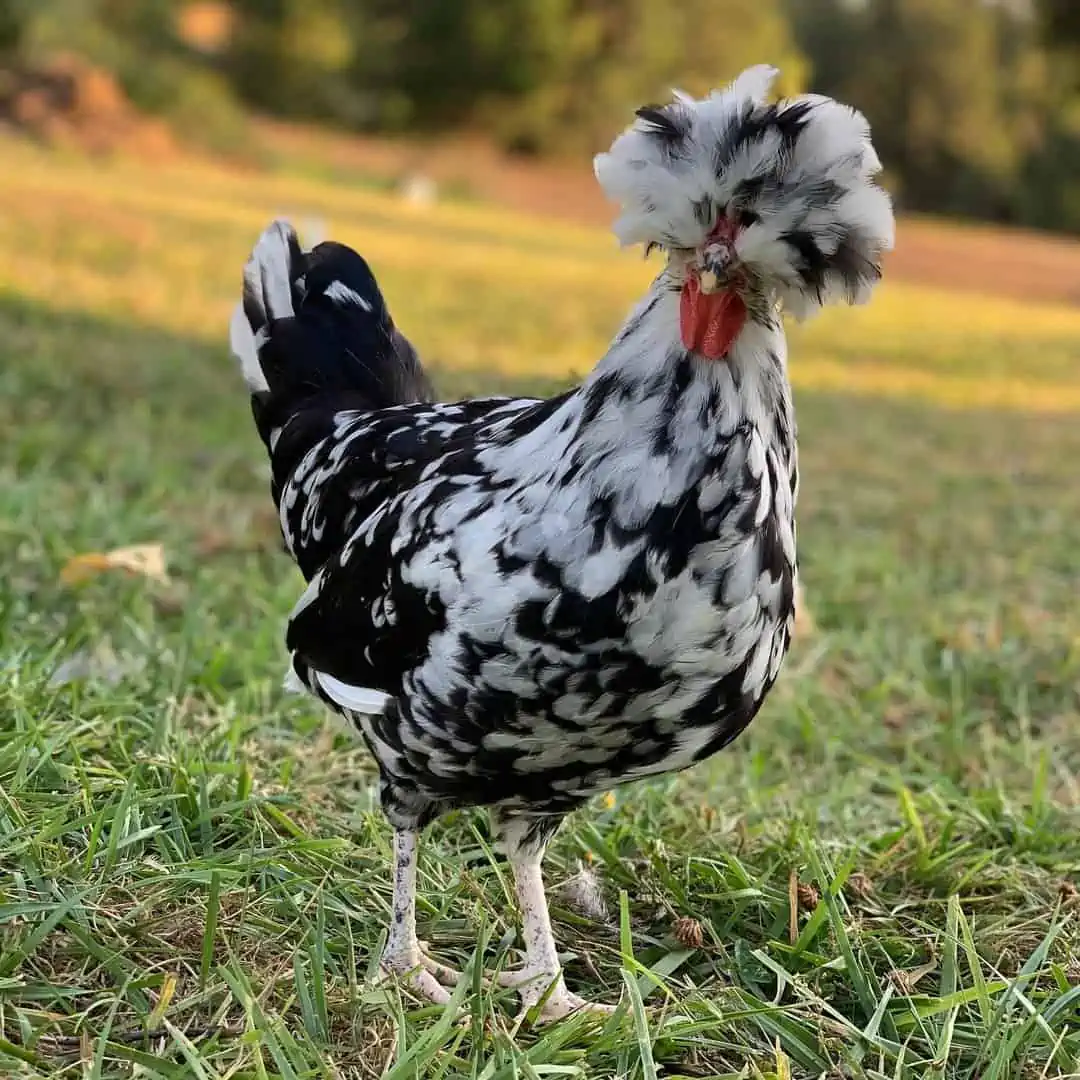
The Houdan is also known as the Poule de Houdan, and it’s a French breed. It’s named after the commune of Houdan, which lies to the west of Paris. And while its origins are shrouded in mystery, it dates back to at least the nineteenth century.
In addition to a splendid crest, it has a beard, muff, and an unusual comb shaped like a leaf. (US breed standards, however, require a V-shaped comb.)
Houdans are most usually found in a color variety known as “mottled” – mainly black feathers with white spots. As is so often the case, different colors are recognized in different countries. Among them are cuckoo, white, and pearl gray.
There are both standard and bantam strains. Standard adult males weigh between 5.5 and 6.5 pounds, while male bantams weigh about 2 pounds. Standard females range from 4.5 to 5.5 pounds, while female bantams are about 28 ounces.
Hens can produce between 140 and 160 smallish eggs per year. But Houdans are most usually kept for showing.
They’re calm, placid birds, and do best in single-breed flocks, or with other non-aggressive breeds.
7. Appenzeller Spitzhauben
The Appenzeller Spitzhauben comes from Switzerland. Its striking crest is reflected in its name, which means “pointed bonnet”. It’s also the name of a traditional pointed hat worn by Swiss women in the Appenzeller region.
Appenzeller Spitzhaubens are small birds. Females weigh just over 2 pounds and males a pound or so more. The hens are good layers, though, laying around 150 medium-sized eggs per year.
These are active chickens, and they need space to roam free. They’re also excellent foragers, and like to roost in trees.
The breed can be found in a number of different color varieties, including gold spangled, lemon spangled, pure black, and pure blue. The silver spangled is the most common, but in any color, this is a rare breed in the USA.
8. Kosovo Longcrower
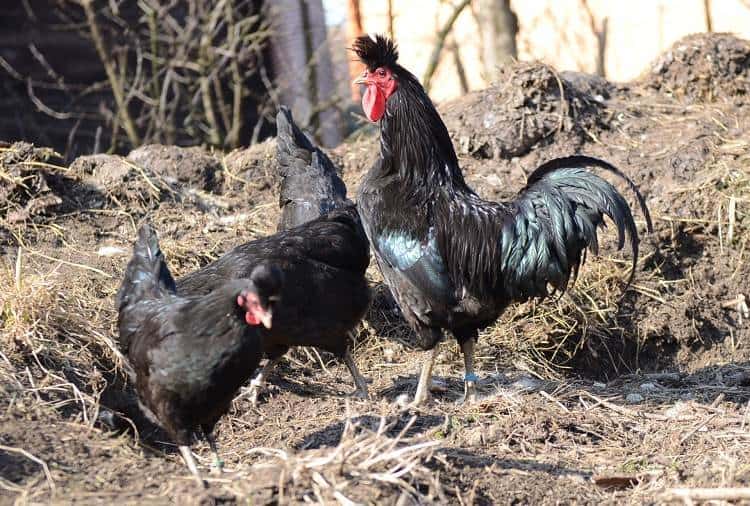
The Kosovo Longcrower originates from the region of Drenica in Kosovo. It’s only in the last decade or so that it’s gained wider popularity. But it’s gradually become more widespread across Europe.
As you might expect from their name, these birds have an exceptionally long crow! Most last between 20 and 40 seconds. But some can continue for a full minute. So this isn’t a breed to choose if you have noise-sensitive neighbors!
They have a v-shaped crest of black feathers that leans forward, a yellow or gold beak, and gray or olive-green feet. Interestingly, the longest crowers are the chooks with olive feet.
The hens can produce up to 200 eggs per year, although they won’t sit on them. Chicks emerge from the shell with brown feathers.
9. Padovana
The Padovana is an ancient Italian breed named after the province of Padua. Its early history has been the subject of much debate. Some believe its ancestors were chickens that originated in Russia, others that they came from Poland, and still others the Netherlands.
Whatever its heritage, this is a breed with a striking fan-like crest, no comb, and tiny wattles. The earlobes are small and white, but you won’t see them because they’re hidden by the crest.
Males weigh between 4 and 5 pounds, while females are between 3.3 and 4.5 pounds. The hens lay small to medium-sized eggs with cream or light brown shells.
They’re confident, inquisitive and friendly birds. And they’re often considered to make great pets for children.
10. Polverara
You may also hear the Polverara referred to as the Schiatta or S’ciata. It’s an Italian breed, and like the Padovana, it hails from Padua. Its origins are lost to time, but records of the breed exist from as early as the fifteenth century.
The Polverara’s crest is small and faces upwards, while the comb is small and V-shaped. The wattles are small too, and the earlobes are white and medium-sized. And these chickens can be found in just two colors, black and white.
Adult males average between 5.5 and 6.2 pounds, while hens are between 4 and 4.6 pounds. The latter lay white eggs, each of which weighs at least 1.75 ounces.
Polveraras are friendly and curious chickens that need room to roam. They like roosting in trees. But they’ll also tolerate being handled, and can make good pets for little ones.
11. Burmese
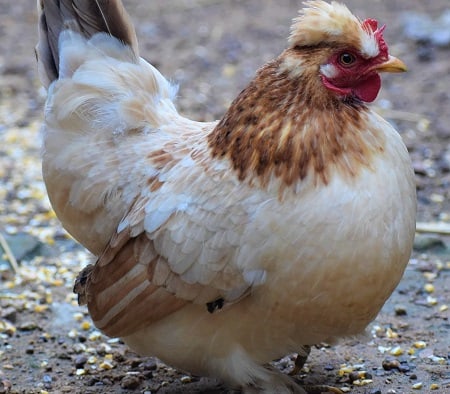
Despite its name, the Burmese is actually a British breed of bantam chicken. But it’s descended from Asian chickens from Myanmar, formerly known as Burma.
By the time of the First World War, this breed was believed to have gone extinct. Happily, though, a few individuals were found in the 1970s. These were bred with Booted Bantams to re-establish the breed.
The Burmese, in fact, looks quite similar to the Booted Bantam. But it has a small crest and is a smaller bird altogether. Males weigh about 1.25 pounds, while females are about a pound. In Britain, Burmese chickens are white, while in the Netherlands, they’re black.
They have short legs, heavy feathers, a single comb, small earlobes and long, drooping wattles.
They’re friendly and tame birds, most usually kept for showing. The hens often go broody, and look after their chicks well. And their small size and calm temperament mean this is another breed that can be good pets for kids.
12. Dutch Owlbeard
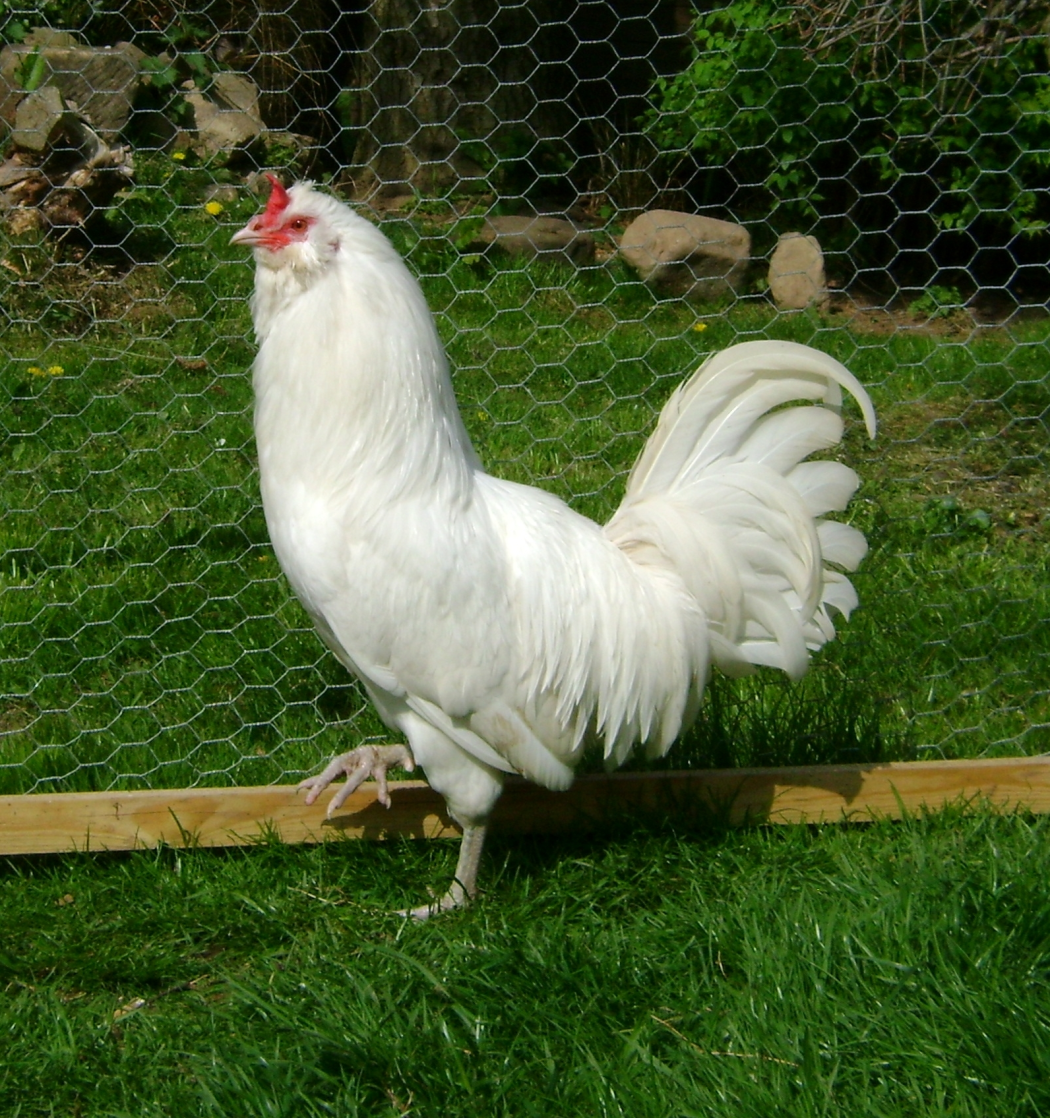
The Nederlandse Uilebaard is a bit of a tongue twister of a name! It’s Dutch for “Dutch Owlbeard” and it’s one of the oldest breeds to originate in the Netherlands. It appears in paintings from as early as the seventeenth century.
As you’d expect from the name, these birds have beards – ruffles of feathers beneath their beaks – as well as small crests. They don’t have any wattles. There are a number of different color varieties, including both solid colors and spangles.
Rosters have what are known as “horn combs”, with straight horns – i.e. the parts of the comb that stick out. And both sexes have an elegant, upright posture.
Hens are good egg layers, producing around 200 white eggs a year. They rarely go broody, and unlike many breeds, they’ll carry on laying throughout the winter.
The chicks emerge looking just as striking as the adult birds. They already have a fluffy collar around their face, which will soon develop into a beard.
They’re healthy and robust birds, who do best free-range and who are excellent foragers. They’re calm and friendly too, and if well cared for, will happily take feed from your hand.
The best of the crests
We hope you’ve enjoyed our look at these beautiful crested chicken breeds.
In some cases, large crests can mean that these chooks need special care and attention. The same goes for feathered legs.
So before you decide to add a breed to your flock, check out their characteristics and needs in detail. And if you’re adding to an existing flock, make sure they’re breeds that will co-exist happily.

